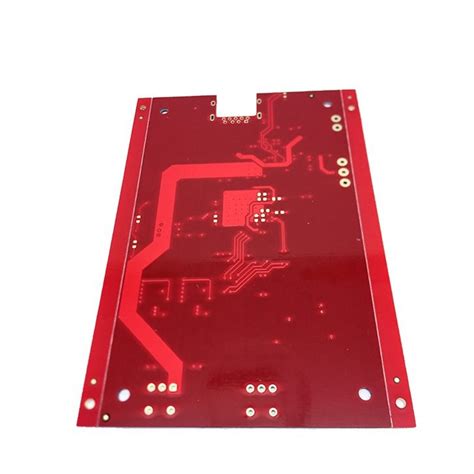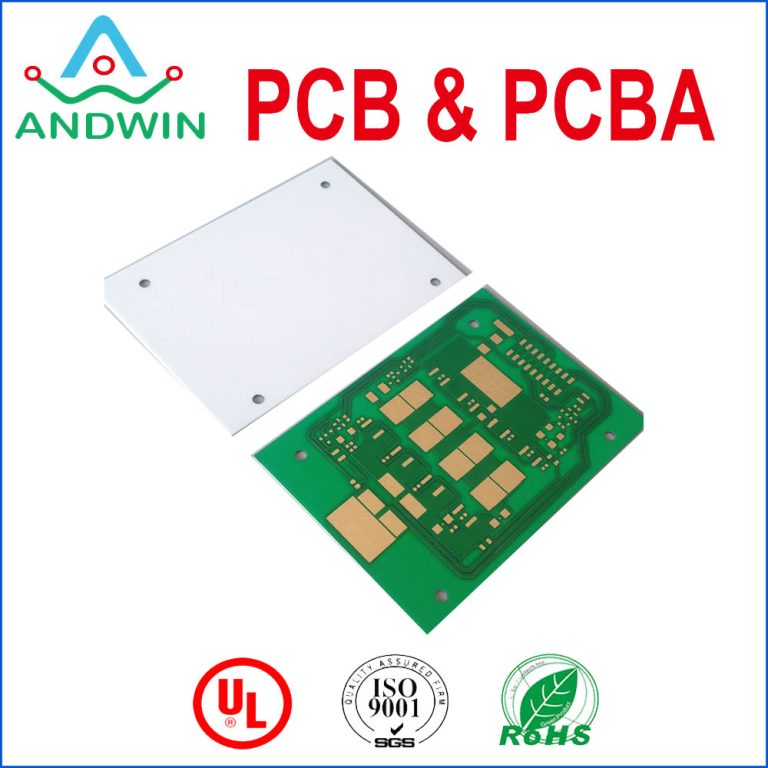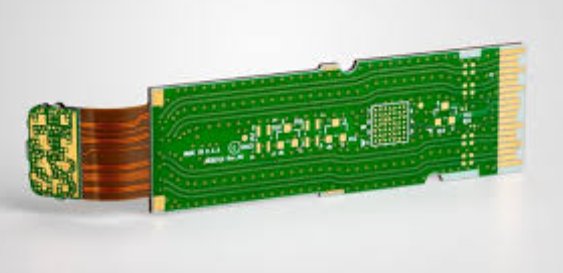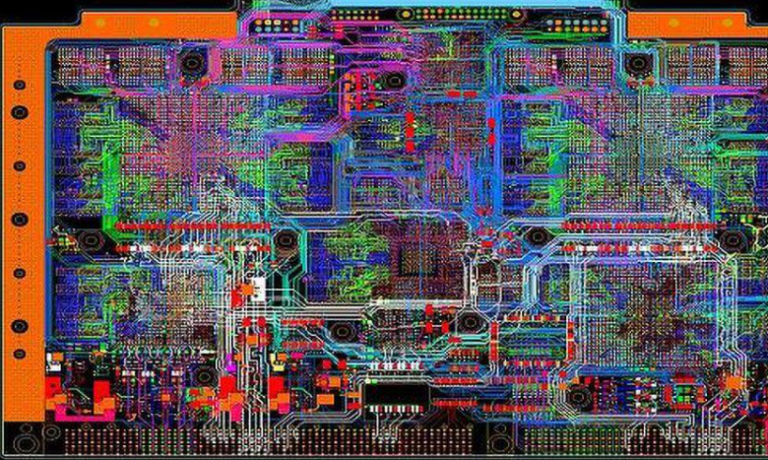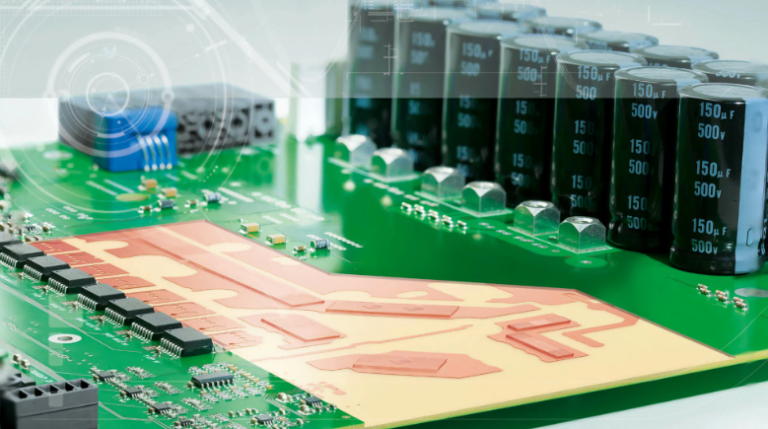Exploring the Benefits of Bare Copper PCBs for Your Projects
Key Takeaways
When considering your options in PCB manufacturing, it’s essential to appreciate the significant advantages that bare copper PCBs present. One of the most compelling benefits is their superior conductivity, which translates to improved signal integrity and overall performance in your electronic projects. This is particularly important for applications where precision and reliability are crucial. Additionally, the pcb manufacturing cost associated with bare copper PCBs can be more favorable compared to traditional alternatives, especially when taking into account their longevity and efficiency. Many PCB manufacturing companies have recognized this shift and started to incorporate bare copper options into their offerings, creating a healthy competitive landscape that can drive innovation in the industry. Furthermore, with enhanced thermal management capabilities, bare copper PCBs help mitigate overheating issues, ensuring that your designs remain stable under various operational conditions. As you think about your next project, understanding these aspects of bare copper can significantly influence the success of your designs and help elevate the standard of your work in the pcb manufacturing business.
Understanding Bare Copper PCBs: An Introduction
When you dive into the world of PCB manufacturing, you will likely encounter bare copper PCBs as a noteworthy option for your projects. These circuit boards are made using bare copper as the primary conductive layer, which provides a unique alternative compared to traditional boards that often use coated copper. The choice of bare copper can significantly impact your overall PCB manufacturing cost, especially if you are seeking enhanced performance without the added expense of extra coatings. Unlike many other materials used by PCB manufacturing companies, bare copper offers superior conductivity, enabling electrical signals to travel more efficiently through the connections. This efficiency can lead to better performance in your final product, making it an appealing choice for engineers and designers focused on quality. The minimal processing required in the PCB manufacturing business also means that you could enjoy greater flexibility and quicker turnaround times when working with bare copper designs. If you’re considering this option, it’s prudent to research and consult reliable sources to fully appreciate how it can improve your project’s reliability and functionality. To learn more about these innovative solutions, consider visiting Andwin PCB for expert insights and services tailored to your needs.
Advantages of Using Bare Copper PCBs
When considering bare copper PCBs for your projects, you stand to gain several significant advantages that can enhance both performance and efficiency. One of the primary benefits is the improved conductivity that these boards offer. Copper has superior conductivity properties compared to other materials often used in PCB manufacturing, ensuring that electrical signals travel more efficiently. This can lead to better performance in high-frequency applications, where signal integrity is critical.
In addition to performance enhancements, bare copper PCBs can also be more cost-effective compared to traditional board solutions. While the initial PCB manufacturing cost might be slightly higher due to the raw materials, the long-term savings in energy efficiency and reduced need for additional components can offset this investment. For those involved in the PCB manufacturing business, choosing bare copper can lead to a competitive edge by attracting clients looking for high-performance solutions.
Another noteworthy advantage is enhanced thermal management; bare copper provides better heat dissipation properties, which is essential in many applications where overheating could compromise functionality. Thus, whether you’re a designer seeking reliability or a purchaser evaluating options from various PCB manufacturing companies, opting for bare copper could elevate your project’s success significantly.
“Selecting the right materials is key to optimizing performance and reliability—consider how bare copper could be a game changer for you.”
Conductivity and Performance: Why Bare Copper Matters
When it comes to pcb manufacturing, the choice of materials can significantly impact the performance of your designs. One of the key recommendations is opting for bare copper PCBs. The inherent properties of bare copper offer superior conductivity compared to traditional materials. This means that your signals can travel more efficiently, leading to faster and more reliable performance in your electronic devices. In terms of cost-effectiveness, while some may see a higher initial pcb manufacturing cost, the long-term benefits far outweigh these expenses. You’ll spend less on maintenance and experience fewer failures in critical applications, which translates into savings for your pcb manufacturing business over time.
Moreover, bare copper PCBs excel in thermal management, which is crucial for devices that generate heat during operation. A well-designed PCB can dissipate heat more effectively with bare copper, enhancing not just performance but also device longevity. In a comparative analysis, the benefits of bare copper far exceed those found in standard boards.
To illustrate these advantages more clearly, consider the following table that outlines conductivity metrics between traditional materials and bare copper:
| Material | Conductivity (S/m) | Temperature Stability |
|---|---|---|
| Bare Copper | 58 x 10^6 | High |
| Standard PCB Material | 20 x 10^6 | Moderate |
This comparison emphasizes why you should prioritize bare copper in your designs as it facilitates better electrical performance while providing enhanced thermal properties—making it a staple in modern electronics brought forth by leading pcb manufacturing companies worldwide. By integrating these materials into your projects, you’re ensuring not only efficient operation but also robust reliability in the increasingly competitive market of electronics.
Cost-Effectiveness of Bare Copper PCB Solutions
When considering bare copper PCBs for your projects, one of the most significant advantages lies in their cost-effectiveness. As you navigate the landscape of pcb manufacturing, you might find that opting for bare copper can lead to considerable savings without compromising on quality. Compared to traditional PCB options, the pcb manufacturing cost associated with bare copper provides not only a reduction in materials but also an increase in efficiency during the production process. Many pcb manufacturing companies offer these solutions tailored to meet your specific project needs, ultimately enhancing both production speed and reliability. Additionally, by utilizing bare copper technology, your designs may experience improved performance features that result in lower long-term operational costs. Engaging with a robust pcb manufacturing business that specializes in these innovative designs ensures you are making an economical choice while delivering high-performance results. Thus, as you move forward with your projects, considering bare copper PCBs could very well be the smart and cost-effective decision for achieving optimal results.
Thermal Management Benefits in Bare Copper PCBs
When it comes to thermal management, bare copper PCBs present several distinct advantages that can significantly enhance the performance of your projects. The superior thermal conductivity of bare copper, as compared to traditional PCB materials, allows for more efficient heat dissipation, thus reducing the risk of overheating in critical components. This becomes particularly important in high-frequency or high-power applications where effective heat management is crucial for reliability and longevity. By utilizing bare copper PCBs, you can optimize the thermal performance of your designs, leading to diminished likelihood of thermal stress and failure. Furthermore, as pcb manufacturing technologies evolve, incorporating bare copper can lower your pcb manufacturing cost by reducing the need for additional cooling solutions or complex heat management systems. It streamlines your design for manufacturability while enhancing performance metrics, making it a smart choice for those partnering with reputable pcb manufacturing companies. Choosing bare copper not only impacts thermal management positively but also reflects professionally on your pcb manufacturing business by aligning with best practices in contemporary electronics design.
Comparisons: Bare Copper vs. Traditional PCBs
When it comes to the realm of PCB manufacturing, the choice between bare copper PCBs and traditional options can significantly impact your project’s overall success. Traditionally, PCBs are made using standard copper-clad laminates, which may compromise certain critical performance aspects such as conductivity and thermal management. In contrast, bare copper PCBs, which utilize a layer of exposed copper circuits, provide a distinct advantage through their superior conductivity. This enhanced performance allows for reduced signal loss and improved overall efficiency, especially in high-speed applications.
Moreover, as you consider the pcb manufacturing cost, bare copper solutions may initially appear to be a more expensive option. However, the long-term benefits of cost-effectiveness arise from their ability to manage heat more efficiently, reducing the chance of failures and subsequent costly repairs or replacements. Understanding these efficiencies can lead you to make a more informed decision regarding your PCB needs.
It’s also essential to recognize that not all pcb manufacturing companies provide or specialize in bare copper options; hence, prioritizing suppliers who demonstrate proficiency in this area can enhance your project’s success. By integrating rulers for improved thermal management with the unique properties of bare copper materials, you can elevate the reliability and durability of your designs substantially. The advantages of these advanced technologies highlight that while traditional PCBs have their place, exploring bare copper alternatives could yield significant benefits for your PCB manufacturing business and future projects alike.
Applications of Bare Copper PCBs in Various Industries
The use of bare copper PCBs has permeated multiple sectors, reflecting their versatility and numerous advantages. In the pcb manufacturing industry, bare copper PCBs are favored for their exceptional conductivity, making them ideal for high-frequency applications such as telecommunications and RF components. This enhances the performance of devices that depend on rapid signal transmission. Furthermore, in the automotive industry, pcb manufacturing companies are increasingly adopting bare copper solutions for electric vehicle components where efficient thermal management is critical to maintain safety and reliability during operation. From consumer electronics to industrial equipment, the pcb manufacturing cost remains a significant consideration; however, the cost-effectiveness of bare copper solutions often balances out initial expenses due to reduced downtime and enhanced performance. Similarly, in aerospace applications, where reliability is paramount, bare copper PCBs offer reduced weight without compromising on strength or efficiency. As you explore your options within the pcb manufacturing business, considering the diverse applications of bare copper technology may lead to more innovative and effective designs tailored to your project’s specific demands.
Future Trends in PCB Technology and the Role of Bare Copper
As you delve into the future trends in PCB technology, it’s essential to recognize the increasingly vital role that bare copper PCBs play in shaping innovations. The shift toward more efficient, reliable, and performance-driven designs has prompted many PCB manufacturing companies to adopt bare copper solutions. This transition is largely driven by the need for enhanced conductivity and overall performance, making bare copper PCBs not just a choice but a necessity in many applications. Moreover, as the demand for high-quality electronics continues to surge, you may find that the PCB manufacturing cost associated with bare copper solutions is often offset by their long-term benefits, such as reduced thermal management issues. In the competitive landscape of the PCB manufacturing business, this advantage can lead to significant cost savings over time. Additionally, as industries increasingly require more powerful circuitry within smaller footprints, bare copper’s superior performance characteristics become a crucial factor in product development. Thus, staying informed about these trends allows you to make more strategic decisions in your projects while harnessing the advantages offered by bare copper technologies.
Conclusion
In conclusion, bare copper PCBs represent a significant advancement in the world of printed circuit board technology, offering numerous benefits that can enhance your projects. By choosing bare copper over traditional alternatives, you can leverage improved conductivity, which is crucial for high-performance applications. This not only helps in achieving better signal integrity but also ensures that your designs operate efficiently under various conditions. Furthermore, the cost-effectiveness of bare copper PCB solutions cannot be overlooked. As you work with PCB manufacturing companies, you may find that the overall pcb manufacturing cost can be reduced due to decreased material requirements and lower thermal management expenses.
The thermal management capabilities of bare copper PCBs are particularly noteworthy; they provide enhanced heat dissipation, which prolongs component life and improves reliability. When considering your next project, whether in consumer electronics or industrial applications, think about how transitioning to bare copper PCBs could align with your business goals in the pcb manufacturing business landscape. The application of this technology not only elevates the performance of individual designs but can also set you apart in a competitive market focused on innovation and efficiency. By staying informed about these advancements and integrating them into your workflow, you can capitalize on future trends within PCB technology while ensuring that your projects remain robust and reliable.
FAQs
What are bare copper PCBs?
Bare copper PCBs are circuit boards that have not been coated with any insulating material. This allows direct contact with the copper, which can enhance conductivity and provide better heat dissipation.
How do bare copper PCBs improve conductivity?
The absence of surface coatings on bare copper PCBs allows for optimal electrical flow, which results in improved conductivity. This characteristic makes them a preferable choice for high-performance electronic applications.
Are bare copper PCBs cost-effective?
Yes, despite a potentially higher initial pcb manufacturing cost, bare copper PCBs can save you money in the long run by reducing the need for additional materials and enhancing the lifespan of your designs. Efficiency in manufacturing often leads to lower costs in large-scale production.
What role do PCB manufacturing companies play in this?
Many pcb manufacturing companies offer specialized services tailored to bare copper PCBs. They possess expertise that can help you navigate pcb manufacturing business challenges while ensuring that your designs meet industry standards and expectations.
Where can I find more information about PCB manufacturing?
For more detailed insights into pcb manufacturing, including costs and processes, please click here: Andwin PCB Manufacturing.

